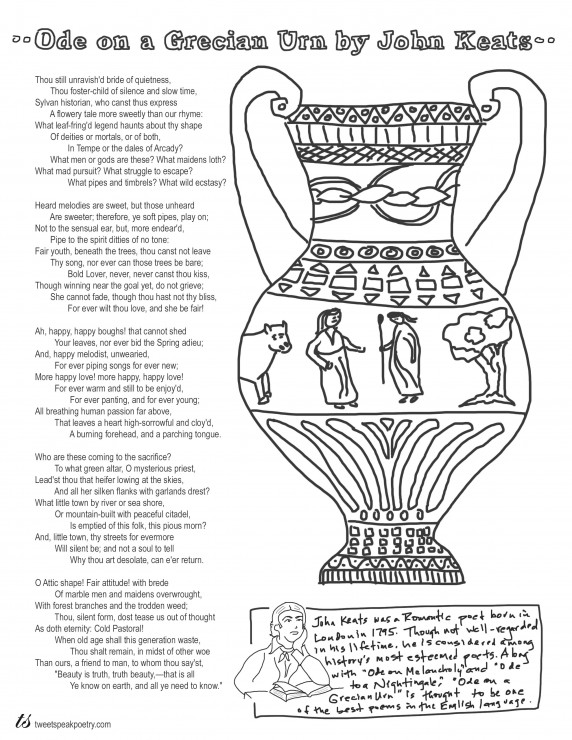
🌷 Ode on a grecian urn literary analysis. Ode On A Grecian Urn Analysis. 20221028
By Dr Oliver Tearle (Loughborough University) 'Ode on a Grecian Urn' is one of the best-known and most widely analysed poems by John Keats (1795-1821); it is also, perhaps, the most famous of his five Odes which he composed in 1819, although 'To Autumn' gives it a run for its money. The best way to analyse 'Ode on a Grecian Urn' is by going through the poem with a stanza-by-stanza.

Ode on a Grecian Urn Picture, Ode on a Grecian Urn Image
Summary. 'Ode on a Grecian Urn' by John Keats muses and celebrates art's ability — in this case the images upon a piece of ancient Greek pottery — to capture and immortalize life's beauty. In this poem, Keats (or at least, the speaker in the poem) mulls over the strange idea of the human figures carved into the urn.
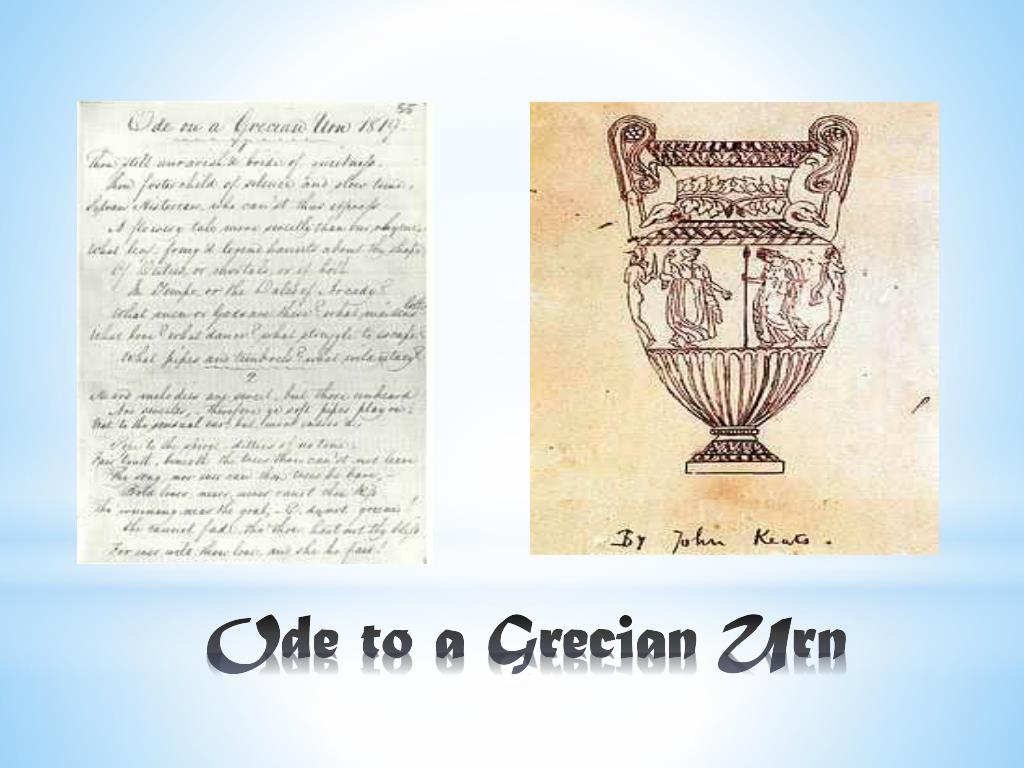
PPT Ode on a Grecian Urn PowerPoint Presentation, free download ID2142445
Keats uses the word happy six times in the first five lines and the word forever five times, underlining the positive emotion the speaker invests in the immortal scenes before him. One of Keats' five odes, 'Ode On A Grecian Urn' explores the idea of beauty as truth through Keats' own 'negative capability' and the strength of the imagination.

John Keats Ode to a Grecian Urn YouTube
Many readers of this poem have wondered about the actual Grecian urn that inspired it; although scenes like those described in this poem can be found on several examples of Greek pottery surviving in museums, all the details combined together seem to have existed only in Keats's imagination. The ode celebrates the immortality of the urn, seen
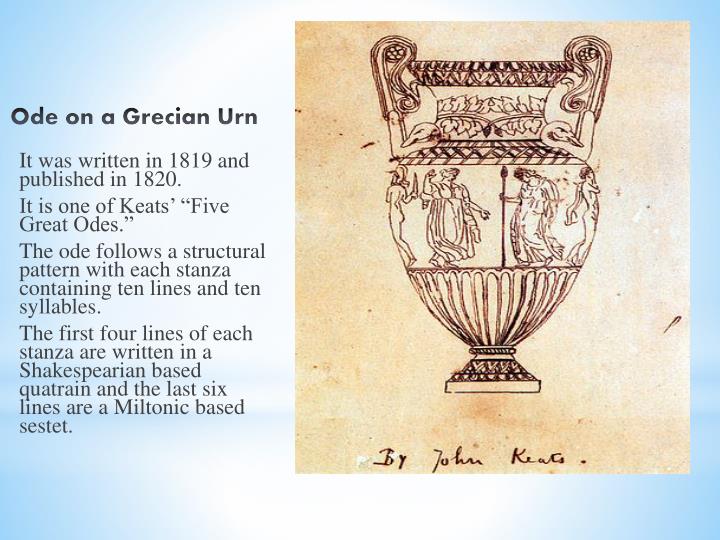
PPT Ode on a Grecian Urn PowerPoint Presentation ID2142445
Overview. "Ode on a Grecian Urn," written in 1819 by John Keats and published anonymously in Annals of the Fine Arts, is one of the "Great Odes of 1819.". The other odes in the sequence include "Ode on Innocence," "Ode on Melancholy," "Ode to a Nightingale," and "Ode to Psyche.". Two articles focusing on the classics.
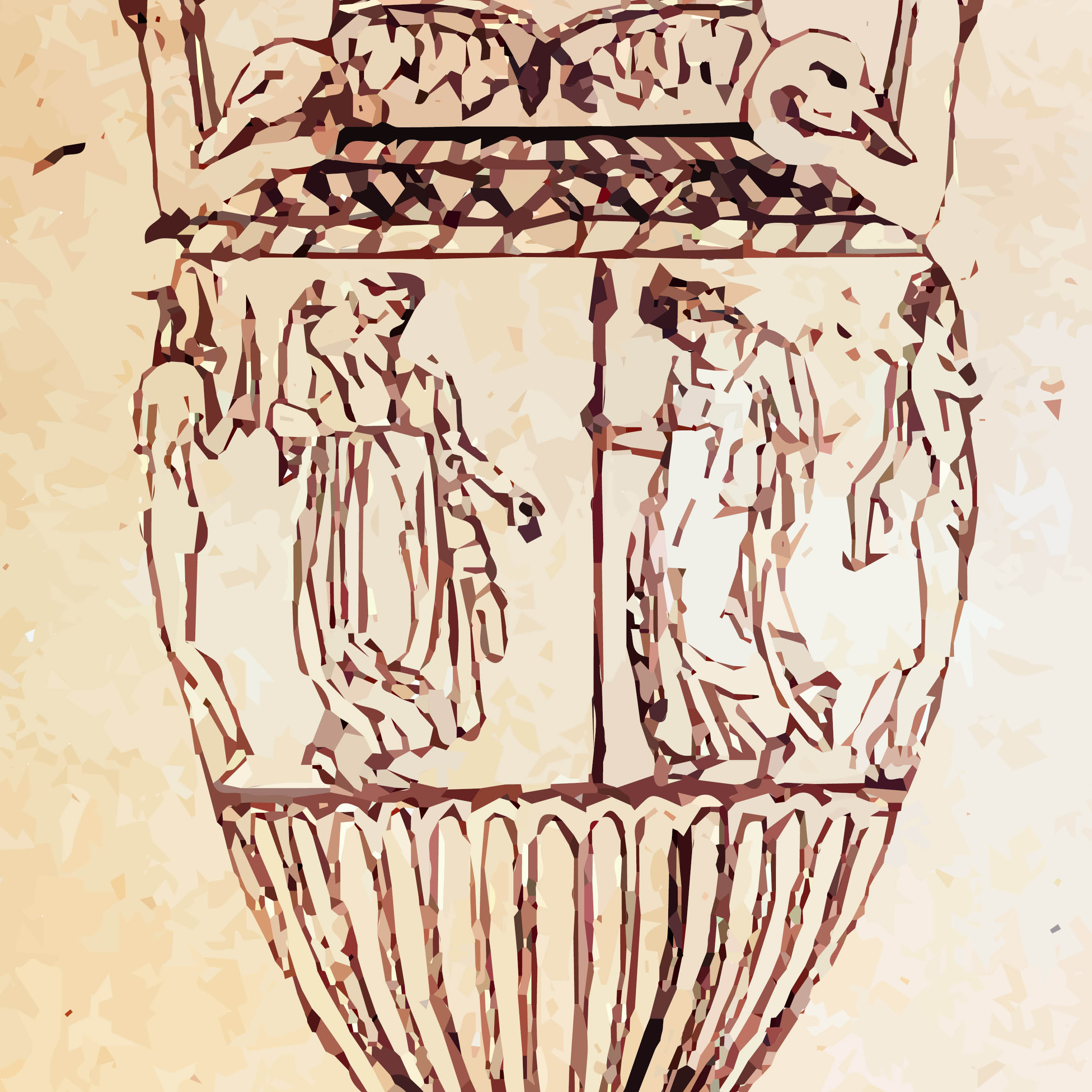
Keats Ode To A Grecian Urn Best Decorations
Ode on a Grecian Urn By John Keats About this Poet John Keats was born in London on 31 October 1795, the eldest of Thomas and Frances Jennings Keats's four children. Although he died at the age of twenty-five, Keats had perhaps the most remarkable career of any English poet.

Ode on a Grecian Urn YouTube
John Keats. "Ode on a Grecian Ode" is based on a series of paradoxes and opposites: the discrepancy between the urn with its frozen images and the dynamic life portrayed on the urn, the human and changeable versus the immortal and permanent, participation versus observation, life versus art. As in "Ode to a Nightingale," the poet wants to.

POETRY. POEM, Ode on a Grecian Urn by John Keats. 1795 to 1821. Digital Art by Tom Hill Fine
In the space of four lines, the speaker conjures three separate metaphors to describe the urn. First, they refer to the urn as an "unravish'd bride of quietness.". As a "bride of quietness," the urn is metaphorically married to silence, and hence has yet to reveal its hidden mysteries. Next, the speaker calls the urn a "foster-child.

Ode to a Grecian Urn PowerPoint Teaching Resources
Analysis. If the "Ode to a Nightingale" portrays Keats's speaker's engagement with the fluid expressiveness of music, the "Ode on a Grecian Urn" portrays his attempt to engage with the static immobility of sculpture. The Grecian urn, passed down through countless centuries to the time of the speaker's viewing, exists outside of.

Analysis of the Poem 'Ode On A Grecian Urn' by John Keats Owlcation
The urn is addressed (= talked to). Talking to a thing is a thing that poets do in odes. (You will see that In this ode, the poet also addresses the things he sees on the urn.) Line 1: THOU still unravish'd bride of quietness, The urn is the virgin ("unravished" means she has not been touched) bride of quietness.

mehta kavita Ode on a Grecian urn John Keats
Tracing of an engraving of the Sosibios vase by Keats. " Ode on a Grecian Urn " is a poem written by the English Romantic poet John Keats in May 1819, first published anonymously in Annals of the Fine Arts for 1819 [1] (see 1820 in poetry). The poem is one of the "Great Odes of 1819", which also include "Ode on Indolence", "Ode on Melancholy.

Ode on a Grecian Urn by John Keats
Few poems have demanded as much critical discussion as "Ode on a Grecian Urn," which is a five-stanza ode written by the British Romantic poet John Keats.At the heart of this poem stands an ancient Greek urn that's covered in "leaf-fring'd" (line 5) motifs. These motifs include a scene of Dionysian revelry, a portrait of two young lovers frozen in the moment before they kiss, and a.

Ode on a Grecian Urn by John Keats _ the Poetry Foundation John Keats British Poems
Entering a debate dating back to Plato, Keats stakes a Romantic claim: the human imagination and its passions intertwine beauty and ethics. And in this ode, the urn now sits in for poetry itself, which Keats had earlier described in "Sleep and Poetry" as "a friend / To sooth the cares, and lift the thoughts of man.".
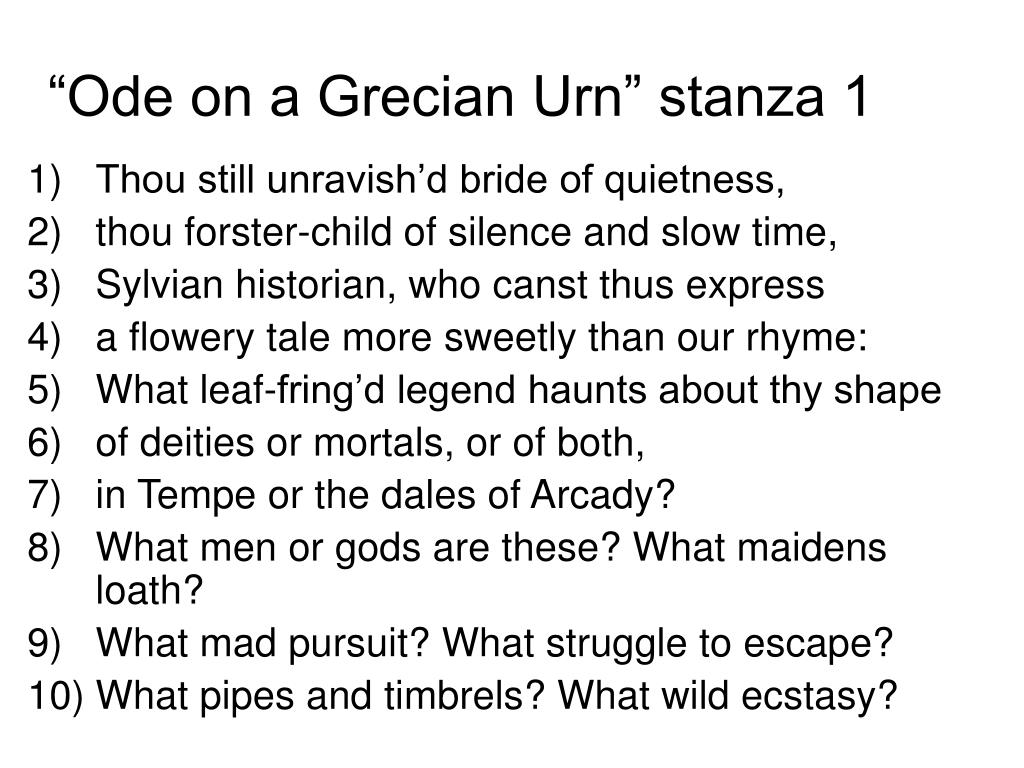
PPT John Keats and Stanza 1 of “Ode on a Grecian Urn” PowerPoint Presentation ID5398220
Ode on a Grecian Urn, poem in five stanzas by John Keats, published in 1820 in the collection Lamia, Isabella, The Eve of St. Agnes, and Other Poems. The ode has been called one of the greatest achievements of Romantic poetry, and it is also one of the most widely read poems in the English language. The poet describes a scene on an urn that.
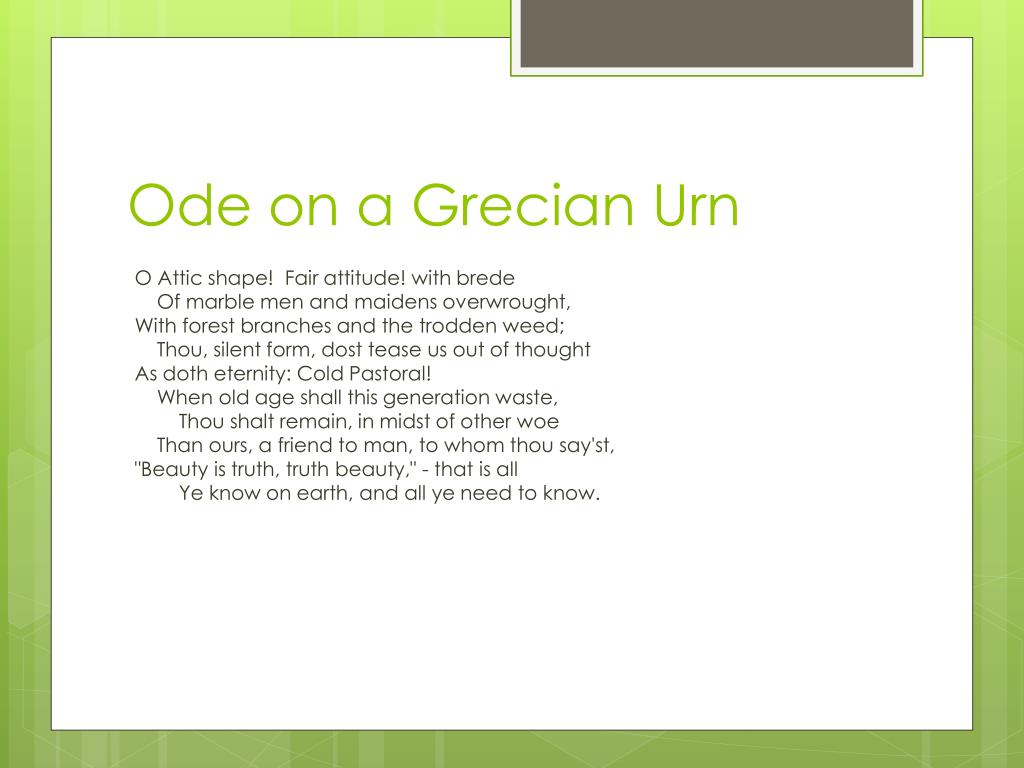
PPT Explication of Ode on a Grecian Urn PowerPoint Presentation, free download ID2142004
Analysis. Last Updated October 20, 2023. Throughout "Ode on a Grecian Urn," the speaker experiences a wide range of emotions and feelings regarding the urn's immortalization of the figures.
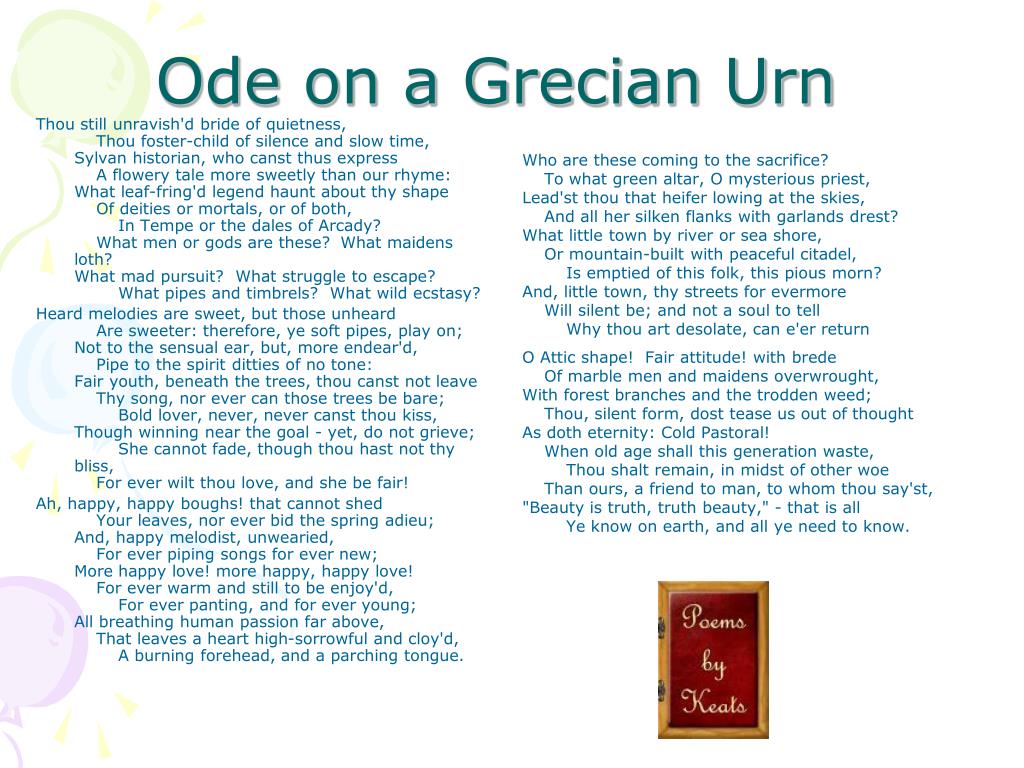
PPT Odes on a Grecian Urn By John Keats PowerPoint Presentation, free download ID5398236
Ode on a Grecian Urn. Commento in italiano.continua. di sbardy (23049 punti) 3' di lettura. 3,5 / 5 (2) Commento a "Ode su un' Urna Greca" di John Keats.
- Bed And Breakfast In Berlin
- Mg Di Nicotina In Una Sigaretta
- Quanti Giorni Mancano Al 19 Aprile
- Storie Della Genesi Wiligelmo Riassunto
- Gigi D Alessio Non Solo Parole
- Portrait Adele Bloch Bauer Ii
- Canzone Sei La Più Bella Del Mondo
- Studi Di Funzione Analisi 1
- Aeroporto Nizza Terminal 1 E 2
- Cartina Emilia Romagna Con Tutti I Comuni